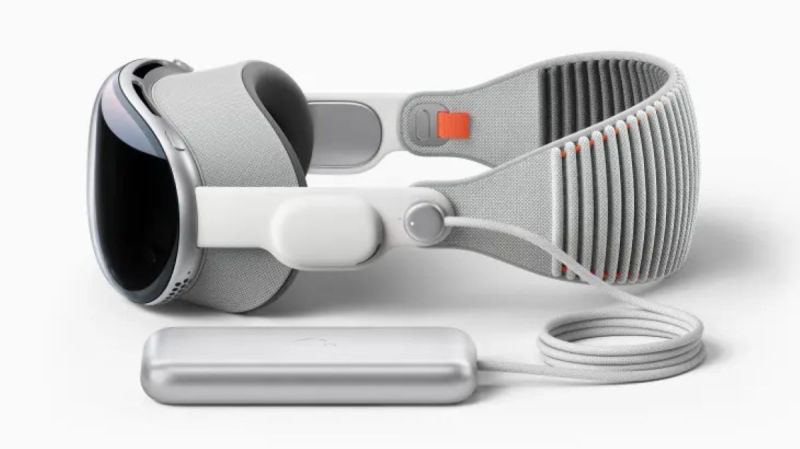Apple has unveiled its highly anticipated augmented reality headset, Apple Vision Pro, which aims to merge the real and digital worlds. With a design resembling ski goggles, CEO Tim Cook described it as the first Apple product that users look through, rather than at.
The headset features separate battery packs and can be controlled using eyes, hands, and voice commands. Priced at $3,499, it is set to launch early next year, starting in the US market with plans for global expansion.
Augmented and Virtual Reality
Apple Vision Pro is primarily an augmented reality (AR) device but can switch to full virtual reality (VR) with the turn of a dial. The controller-free device allows users to navigate through rows of app icons in the visionOS operating system simply by looking at them.
It supports familiar iPhone and iPad apps and incorporates voice commands. Additionally, the headset supports Bluetooth accessories and enables users to connect their Mac for use within the headset. Hand tracking is possible through downward-facing cameras, even when the hands are resting low on the body.
Design, Optics, and Immersive Features
The headset’s design comprises a glass front, an aluminum frame, and a modular mask and strap. The mask, known as the “Light Seal,” and the strap, known as the “Head Band,” are cloth-lined and adjustable to fit various face shapes and head sizes.
Zeiss has partnered with Apple to provide custom optical inserts for users who wear glasses. The headset includes an external battery that lasts up to two hours, offering flexibility for extended use through connection to external power sources.

With a 4K display for each eye, the Apple Vision Pro promises an unprecedented level of sharpness and video quality. The device uses the M2 chip and introduces a new chip called the R1. It incorporates an EyeSight system that displays users’ eyes and offers passthrough video, enabling the projection of 3D objects into the real world.
Furthermore, the headset creates a digital persona by scanning the user’s face and allows for spatial audio during remote communication. Users can also capture and relive 180-degree video with the integrated 3D camera.
Future Possibilities
The announcement of Apple Vision Pro comes after years of development and numerous iterations. It is seen as a significant addition to Apple’s product lineup and has garnered praise from industry insiders. However, the headset enters a market that has yet to fully take off.
Meta is expected to be a primary competitor, given its success with the Quest 2 headset for gaming. The market’s response to Apple’s venture into the augmented reality space remains to be seen.

As the launch of Apple Vision Pro approaches, excitement builds among tech enthusiasts and industry watchers. The advanced features, intuitive controls, and high-quality display position the headset as a potential game-changer in the augmented reality landscape.
With its unique capabilities and Apple’s reputation for innovation, the Apple Vision Pro has the potential to shape the future of AR and VR experiences for users worldwide.

